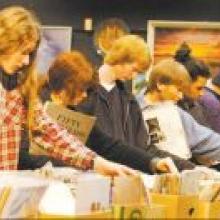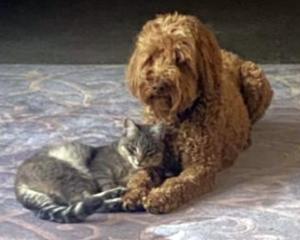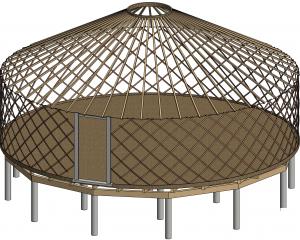
One rafting? Bungy jumping? Zip line? Then perhaps it's time for via ferrata. The World War I innovation in Italian mountaineering could be coming to a gorge near Wanaka.
''Via ferrata'' is an Italian term meaning ''iron way'', and is used to describe a steep climbing route laid out with steel safety cables and other metal safety features.
Wanaka company Our Planet Ltd has applied to the Queenstown Lakes District Council to install a commercial via ferrata, including seven wire bridges, up one of the Twin Falls on Cattle Flat Station, owned by Charlie Ewing, next to the access road to the Treble Cone skifield, on Mt Aspiring Rd.
In the company's application, planner Scott Edgar, of Southern Land Ltd, said the route up the 600m left-hand fall was within a ''steeply incised'', rocky gully on the western side of the Motatapu Valley.
The route would have metal ladders, rungs, wire bridges and cables permanently fixed to the rock allowing people to safely climb, descend and traverse the rock faces.
''Recently, via ferrata have become popular with more adventurous walkers, allowing them to venture where only the climbing fraternity would otherwise dare,'' Mr Edgar said.
Older routes overseas have been restored and many new ''protected paths and climbs'' have been established by local alpine groups under the sponsorship of local towns and villages.
''Via ferrata provides an excellent way to cover ground not normally accessible without being a competent rock climber, and provides great views and exposure without the risk of rock climbing.''
The company envisages using the route for up to 30 customers a day, plus five guides.
Mr Edgar said there were five grades of via ferrata. The grade two envisaged would not be technically demanding, and would provide a route for ''reasonably fit walkers/scramblers free from vertigo''.
Three routes are envisaged, criss-crossing the waterfall gully.
The bridges, between 6m and 20m long, would be wire or ''single plank'' up to 300mm wide.
Access to the route would be available only through guided trips.
Mr Edgar said even at relatively close distances, the proposed bridges and fixed climbing aids would be ''low impact in terms of visibility'' due to their recessive colours, their low profile and the complexity of the rock faces.
With the route within ''a steep gorge with cascading waterfalls'', he considered the structures would be ''barely visible''.
The gorge is 600m from Mt Aspiring Rd.
Descent routes would follow sheep tracks and would be upgraded and as a result ''may become more defined and noticeable to a marginal degree''.
''Overall, it is considered that the proposed activity will have a less than minor adverse landscape effect.''
The proposal requires a discretionary activity resource consent.
Mr Edgar considered the effects of the development were less than minor, and the approval of the relevant landowners had been obtained.
• The Queenstown Lakes District's first via ferrata climbing operation opened in Queenstown about 2003.











